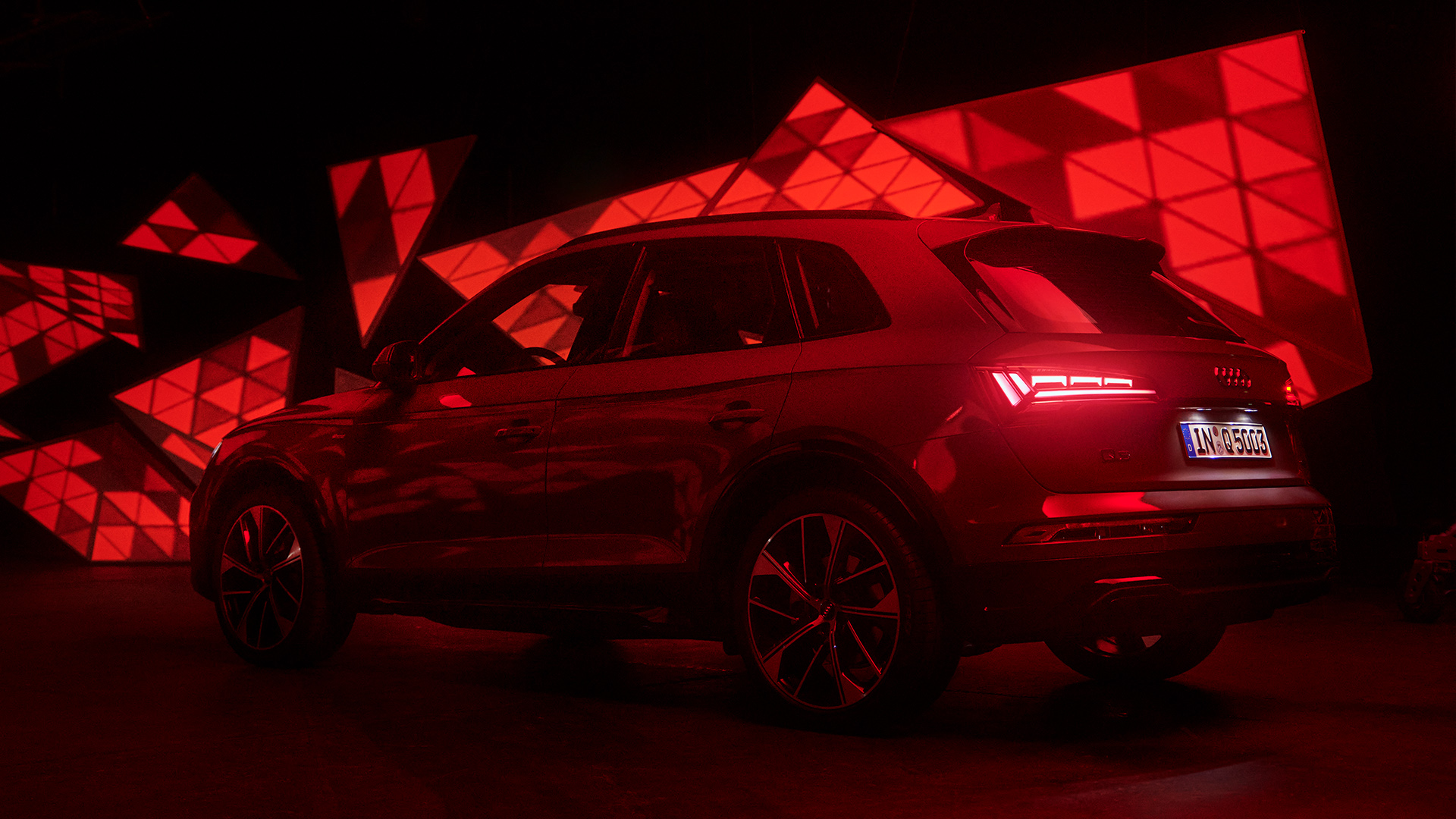From LED to Matrix LED and OLED technology
Better visibility, more precise illumination: Audi is constantly building a technological advantage with the headlights and taillights on its vehicles.

Light offers exciting possibilities in design and functionality.
Light offers exciting possibilities in design and functionality.
The forms taken by highly functional light elements at Audi range from LED to digital Matrix LED and digital OLED technology. They give expression to the concept of Vorsprung – or leading the way – and could digitalize and even personalize much more. The brand with the four rings first introduced LED headlights on the Audi R8 back in 2008. LED headlights, in which light-emitting diodes serve as the light source, provide a more precise form of illumination than xenon or halogen bulbs. LED headlights have a higher level of efficiency than headlights with conventional bulbs and a greater range on high beam. They also offer improved headlight homogeneity and thus a distinctive light design that gives the overall vehicle design a striking look. In addition, If LED headlights light up the dark, the driver’s eyes fatigue more slowly. That’s because at 5,500 kelvins, the color temperature of LED light is similar to that of daylight.

The Audi R8 was the first production car at Audi on which optional LED headlights were available from 2008. Pictured here: Audi R8 Coupé V10 RWD*.
Only consumption and emission values according to WLTP and not according to NEDC are available for the vehicle.
The Audi R8 was the first production car at Audi on which optional LED headlights were available from 2008. Pictured here: Audi R8 Coupé V10 RWD*.
Only consumption and emission values according to WLTP and not according to NEDC are available for the vehicle.
Digital Light technology is getting ever more efficient and precise
The DMD (digital micromirror device) technology on the digital Matrix LED light is fascinating: Around one million micromirrors mounted on a small chip are tilted at a rate of up to 5,000 times per second using electrostatic pulses to generate the various light scenarios via three LEDs. Digital Matrix LED headlights, such as those optionally available on the Audi e-tron Sportback* or its successor the Audi Q8 e-tron* can produce a wide range of light scenarios for various driving situations, including the lane light, which creates a carpet of light up to 50 meters ahead that dynamically adjusts when the car changes lane. The integrated orientation light shows the vehicle’s position markings and where it is currently located on the road. Both of these digital Matrix LED light functions go beyond the functions of the Matrix LED light, which already features low beam; cornering, city, and highway lights; and anti-glare full beam, which prevents other road users from being dazzled by the beam of light with extreme precision.

Broken down into tiny pixels, the digital Matrix LED headlights can illuminate the road in high definition.
Broken down into tiny pixels, the digital Matrix LED headlights can illuminate the road in high definition.
OLED technology is the future of light
The way into the future, however, is being lit by Audi OLED technology. It was first used in 2016 in the taillights of the Audi TT RS*. The technology takes the precision and homogeneity of taillights to a new developmental level. That’s because unlike LEDs, which are point light sources, OLEDs (organic light-emitting diodes) are surface light sources. Since OLEDs generate the light directly within the actual surface, no light guides or reflectors are needed to distribute the light, which improves the efficiency and weight. OLED light achieves a very high degree of contrast and can be smoothly dimmed and divided into the smallest segments, which can in turn be assigned different levels of brightness. This creates possibilities for customizable light design with high precision and variability.

The Matrix OLED headlights shine brightly at the rear of the Audi TT RS Coupé*. They have been used on this model since 2016.
Only consumption and emission values according to WLTP and not according to NEDC are available for the vehicle.
The Matrix OLED headlights shine brightly at the rear of the Audi TT RS Coupé*. They have been used on this model since 2016.
Only consumption and emission values according to WLTP and not according to NEDC are available for the vehicle.
Audi is digitalizing the taillights
On the Audi Q5 too, customers have the option of enjoying the modern OLED technology. The SUV’s taillights with digital OLED technology allows customers to choose between three different taillight signatures. In addition, special dynamic coming home and leaving home light sequences can be programmed for each individual signature. Another vehicle highlight is the proximity detection system*: If a road user approaches a stationary Audi Q5 from behind within a distance of two meters, all OLED segments are activated as a warning. When the Audi Q5 starts to move off, it automatically returns to the original light signature.
“The taillights on the Audi Q5 turn into a kind of display on the external skin that will give us many different options and possibilities in the future when it comes to design, personalization, and communication.” – Dr. Werner Thomas, Project Manager, Audi OLED Technolog

Taillights on the Audi Q5 with digital OLED technology (optional). Customers can choose from one of three taillight signatures when ordering their Audi Q5.
Taillights on the Audi Q5 with digital OLED technology (optional). Customers can choose from one of three taillight signatures when ordering their Audi Q5.
The functionality of light is set to be further extended at Audi. Headlights that project symbols onto the road to warn other road users of dangers – such as an ice hazard or an accident – are part of the brand’s future vision of mobility. There are virtually no limits when it comes to light design – the legal regulations determine what is possible in this regard for the time being.





